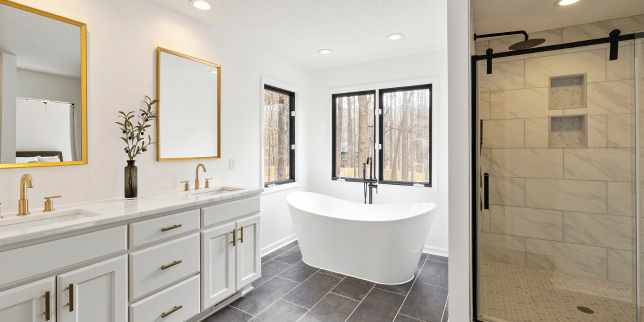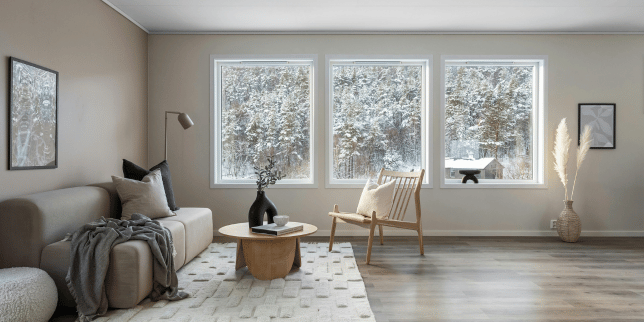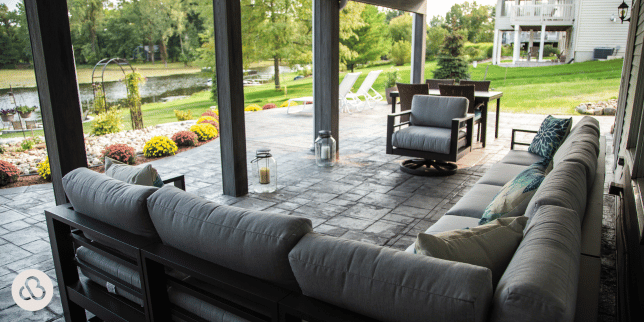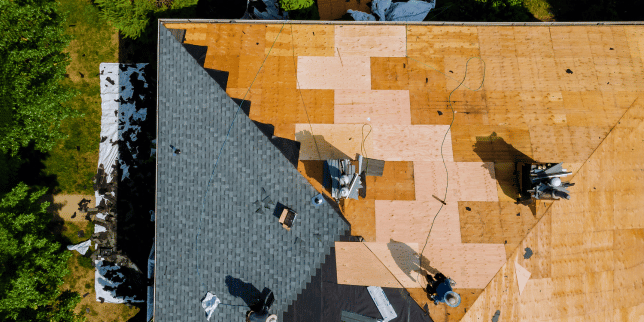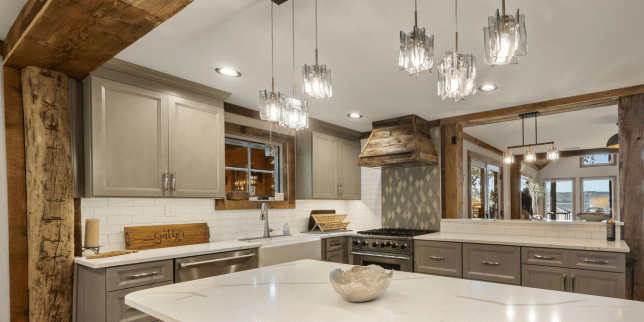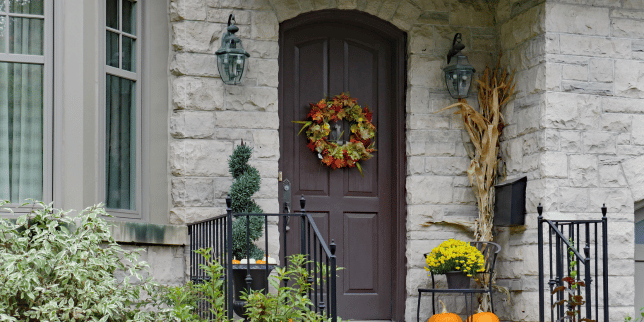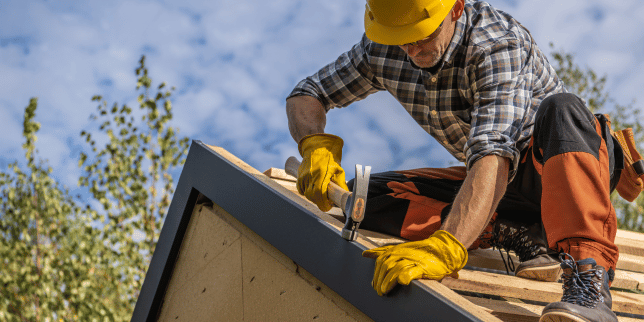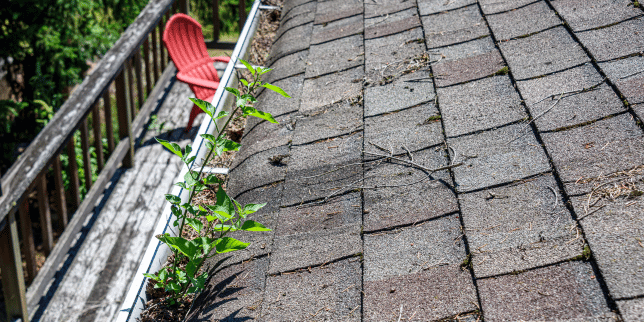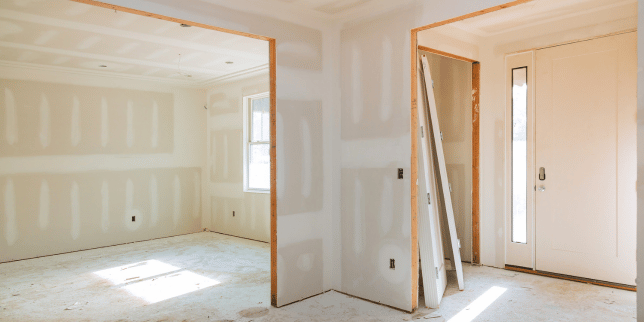
Throughout the fall and winter (and sometimes spring), many homeowners face a common dilemma: drafty windows that let in chilly air, causing discomfort and driving up heating bills. If you're among those struggling to keep your home warm during the cold months, you're not alone.
Fortunately, there are several effective strategies for insulating windows to combat the cold and enhance the comfort of your living space.
With 15+ years of bolstering homes for a Michigan winter, we understand the importance of creating a cozy and energy-efficient environment.
In this article, we'll explore eight practical methods for insulating your windows in cold weather:
- Weatherstripping
- Caulking
- Insulated Window Treatments
- Insulated Curtains or Drapes
- Draft Stoppers
- Window Film
- Storm Windows
- Window Insulation Kits
1. Weatherstripping
Seal gaps and cracks around windows with weatherstripping to prevent cold air from seeping in. Choose a weatherstripping material that is durable and easy to install, such as self-adhesive foam or rubber strips.
Pros:
- Easy to install and replace.
- Effective at sealing gaps and preventing drafts.
- Available in various materials to suit different needs and preferences.
Cons:
- Can be visible, affecting the aesthetic of the window.
- May not be suitable for all types of windows or gaps.
- May degrade over time and need periodic replacement every 3-5 years.
2. Caulking
Use a high-quality silicone caulk to seal any gaps or cracks in the window frame. Apply the caulk along the edges of the window where it meets the frame, as well as any seams or joints.
Pros:
- Provides a durable and long-lasting seal.
- Available in different colors to match the window frame.
- Can be used to seal gaps and cracks in various materials.
Cons:
- Can be difficult to remove or replace once applied.
- Requires careful application to ensure proper sealing.
- May shrink or crack over time, requiring maintenance.
3. Insulated Window Treatments
PC: Walmart
Upgrade to insulated window treatments, such as cellular shades or honeycomb blinds, which feature a layer of trapped air that acts as an insulating barrier. These window treatments can help regulate the temperature inside your home and reduce heating costs.
Pros:
- Provides both insulation and privacy.
- Enhances the aesthetic of the window and room.
- Can be customized to fit specific window sizes and styles.
Cons:
- Generally more expensive than other insulation solutions.
- Requires professional installation for custom or complex windows.
- Limited to providing insulation only when the shades are closed.
4. Insulated Curtains or Drapes
Invest in thick, insulated curtains or drapes to provide an additional barrier against cold drafts. Close the curtains at night to trap heat inside and open them during the day to let sunlight in and warm up the room naturally.
Pros:
- Offers privacy and light control.
- Easy to install and remove for washing.
- Provides additional insulation and a thermal barrier.
Cons:
- Requires space for mounting hardware.
- May not provide a complete seal, allowing some air leakage.
- Obstructs the view and stops the sun from coming in when closed.
5. Draft Stoppers
Place draft stoppers or door snakes along the bottom of windows to block cold air from entering under the window sills. You can purchase draft stoppers at most hardware stores or make your own using a long, narrow fabric tube filled with rice or dried beans.
Pros:
- Easy to install and move as needed.
- Effective at blocking drafts from under doors and windows.
Cons:
- A temporary solution, not a permanent fix.
- Limited to sealing drafts at the bottom of the window.
- Requires regular adjustment to maintain effectiveness.
- May not be as effective at sealing larger gaps or cracks.
6. Window Film
Apply insulating window film to the glass panes to reduce heat loss and block cold drafts. Window film is easy to install and can provide significant energy savings by improving the insulation of your windows.
Pros:
- Easy to install and remove.
- Can enhance the appearance of the window.
- Provides an additional layer of insulation and UV protection.
Cons:
- May reduce visibility and clarity, especially if not applied properly.
- May require periodic replacement or reapplication every 10-20 years.
- Can trap condensation between the film and the window, leading to moisture issues.
7. Storm Windows
PC: Energy Star
Install storm windows on the exterior of your existing windows for an extra layer of protection against the elements. Storm windows create an air pocket between the interior and exterior windows, helping to insulate the space and reduce heat loss.
Pros:
- Improves energy efficiency by reducing heat loss.
- Can be installed on the interior or exterior of existing windows.
- Provides an extra layer of protection against drafts and harsh weather.
Cons:
- May obstruct the view when installed.
- Limited aesthetic options compared to other solutions.
- Requires professional installation, which can be costly (depending on the professional).
8. Window Insulation Kits
Consider using window insulation kits, which typically include plastic shrink film that you apply to the interior of the window frame using double-sided tape. Once the film is in place, use a hair dryer to shrink it and create a tight, insulating seal.
Pros:
- Easy to install with basic household tools.
- Provides a tight seal and reduces heat loss.
- Offers a cost-effective solution for insulating windows.
Cons:
- Can be visible on the window, affecting the aesthetic.
- May require replacement each season, adding to maintenance costs.
- Some kits may be less effective on larger or irregularly shaped windows.
How to Tell if Your Windows Need New Insulation
Unsure of whether or not your windows need any of the listed insulation solutions? Explore the 10 signs to look out for below:
- Drafts: If you feel cold air drafts near your windows, it's a clear sign that insulation may be lacking or compromised.
- Increased Energy Bills: Sudden spikes in heating bills could indicate that warm air is escaping through poorly insulated windows, leading to energy inefficiency.
- Condensation: Excessive condensation forming on the interior surface of windows, particularly between panes or around frames, suggests insulation issues.
- Cold Glass: Touching the glass of your window feels noticeably colder than the surrounding area, indicating insufficient insulation.
- Noise Transmission: If outside noise seems louder than usual when windows are closed, it could indicate poor insulation allowing sound to penetrate more easily.
- Difficulty Opening or Closing: Windows that are difficult to open or close may indicate warping due to temperature changes, which can compromise insulation.
- Visible Damage: Cracked or deteriorating caulking, gaps between window frames and walls, or visible damage to seals are all signs that insulation may be compromised.
- Uneven Temperature Distribution: Rooms near poorly insulated windows may feel colder or warmer than other house areas, indicating inadequate insulation.
- Fading Furniture and Flooring: Increased exposure to UV rays due to inadequate insulation can cause furniture, carpets, and flooring near windows to fade over time.
- Ice Formation: In extreme cases, ice or frost forming on the interior surfaces of windows during cold weather can signal significant insulation issues.
These signs suggest that it may be time to consider upgrading or improving the insulation around your windows to maintain comfort and energy efficiency.
Next Steps to Insulating Your Windows
Insulating windows during the cold season is a crucial step in maintaining a comfortable and energy-efficient home environment. Without proper insulation, your home is vulnerable to cooler temperatures and heightened costs.
By implementing the various methods discussed in this article, you can effectively minimize heat loss, reduce energy bills, and enhance the coziness of your living space.
With over 15 years of remodeling experience, we're committed to providing practical solutions to enhance your home's comfort and efficiency.
Now that you have a better understanding of how to insulate your windows consider taking action to implement these strategies in your home. Don't hesitate to reach out to Custom Built if you need assistance or further guidance in this process.
Now that you know more about how to insulate your windows in cold weather, let’s explore how Custom Built will approach your project, why your windows might be frosting, and the top types of insulation to install for your home’s walls:
- Dream, Design, and Build: Our Remodeling Process - This guide details how we at Custom Built will approach your remodeling project.
- Is Window Frost a Bad Thing? - Discover what causes window frost, when it’s a bad thing, and how to combat it during the cooler seasons.
- Top 5 Types of Wall Insulation and Which is Right for You - Explore popular wall insulation solutions that will save you thousands of dollars on energy bills.
Aaron has been in the building industry his entire life. He worked in his family’s housing business growing up in Dewitt, MI, and for nearly 40 years, built homes in the Mid-Michigan area. He has also worked with the Greater Lansing Home Builder’s Association since he was 18 years old.
Topics:
















